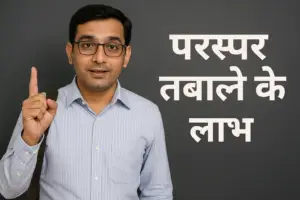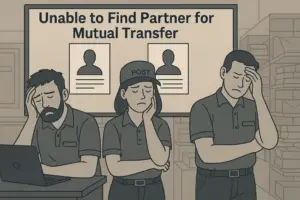
The Uttar Pradesh Basic Education (Teachers) (Posting) Rules, 2008, were established to streamline the posting and transfer of teachers in junior and senior basic schools across the state. These rules aim to ensure equitable distribution of teachers, especially in backward areas, and to maintain a balanced pupil-teacher ratio (PTR). In this blog, we’ll break down the key provisions of these rules and their implications for teachers and the education system in Uttar Pradesh.
Key Highlights of the U.P. Basic Education (Teachers) (Posting) Rules, 2008
- Objective and Applicability
The rules apply to teachers appointed or promoted after August 18, 2008, in junior basic schools (up to Class V) and senior basic schools (up to Class VIII). The primary goal is to ensure that teachers are posted in a fair and transparent manner, with a focus on addressing the needs of backward areas. - Definition of Backward Areas
Backward areas are identified based on two criteria:- Pupil-Teacher Ratio (PTR): Blocks with a higher PTR than the district average are classified as backward.
- Distance from District Headquarters: Blocks located farther than the average distance from the district headquarters are also considered backward.
These areas are listed in Appendix-A, which can be amended by the state government as needed.
- Posting Process for Teachers
- Handicapped Candidates: They are given priority and can choose three schools based on their merit and availability of vacancies.
- Female Teachers: They are required to submit preferences for three schools each from general and backward blocks. Posting is done based on their choices and merit.
- Male Teachers: They are posted in backward areas for at least five years, while female teachers must serve in these areas for a minimum of two years.
- Mutual Transfers and Inter-District Postings
- Mutual transfers between general and backward blocks are allowed, but teachers moving to backward blocks must serve there for five years.
- Inter-district transfers are generally restricted for five years, except in special circumstances, such as for female teachers relocating to their husband’s or in-laws’ district.
- Posting Committee
A committee chaired by the Principal of the District Institute of Education and Training (DIET) oversees the posting process. This committee ensures transparency and fairness in the allocation of teachers to schools. - Seniority and Promotions
Seniority lists are prepared separately for male and female teachers, with special consideration for handicapped candidates. Newly promoted teachers must serve in backward areas unless they have already completed their mandatory service period.
Why These Rules Matter
- Addressing Teacher Shortages in Backward Areas
By mandating postings in backward areas, the rules aim to bridge the gap in educational resources between urban and rural regions. This ensures that students in remote areas have access to qualified teachers. - Promoting Gender Equity
Female teachers are given flexibility in choosing their posting locations, which encourages more women to join the teaching profession. This is particularly important in a state like Uttar Pradesh, where female literacy rates have historically been lower. - Ensuring Transparency
The involvement of a posting committee and the use of merit-based rosters eliminate biases and ensure that postings are done fairly. - Balancing Pupil-Teacher Ratio (PTR)
By focusing on PTR, the rules aim to improve the quality of education by ensuring that schools have an adequate number of teachers relative to their student population.
Challenges and Considerations
While the rules are well-intentioned, there are some challenges:
- Reluctance to Serve in Backward Areas: Teachers may be hesitant to work in remote or underdeveloped areas due to lack of infrastructure and facilities.
- Implementation Issues: Ensuring that the rules are followed uniformly across all districts can be difficult, especially in a large state like Uttar Pradesh.
- Teacher Retention: Retaining teachers in backward areas after their mandatory service period is a concern, as many may seek transfers to urban areas.
Conclusion
The U.P. Basic Education (Teachers) (Posting) Rules, 2008, are a significant step toward improving the quality of education in Uttar Pradesh. By addressing teacher shortages in backward areas and promoting transparency in postings, these rules contribute to a more equitable education system. However, effective implementation and addressing the challenges faced by teachers in remote areas are crucial for achieving the desired outcomes.
For teachers, understanding these rules is essential to navigate their careers effectively. For policymakers, continuous evaluation and amendments to the rules will ensure they remain relevant and effective in addressing the evolving needs of the education sector.
To stay updated and access more information, here are some important links:
- Uttar Pradesh Secondary Education Service Selection Board (UPSESSB)
- This is the official website for teacher recruitment, eligibility, and exam-related updates in Uttar Pradesh.
- Uttar Pradesh Basic Education Department
- The official portal for policies, teacher postings, and updates related to primary and upper primary education in Uttar Pradesh.







